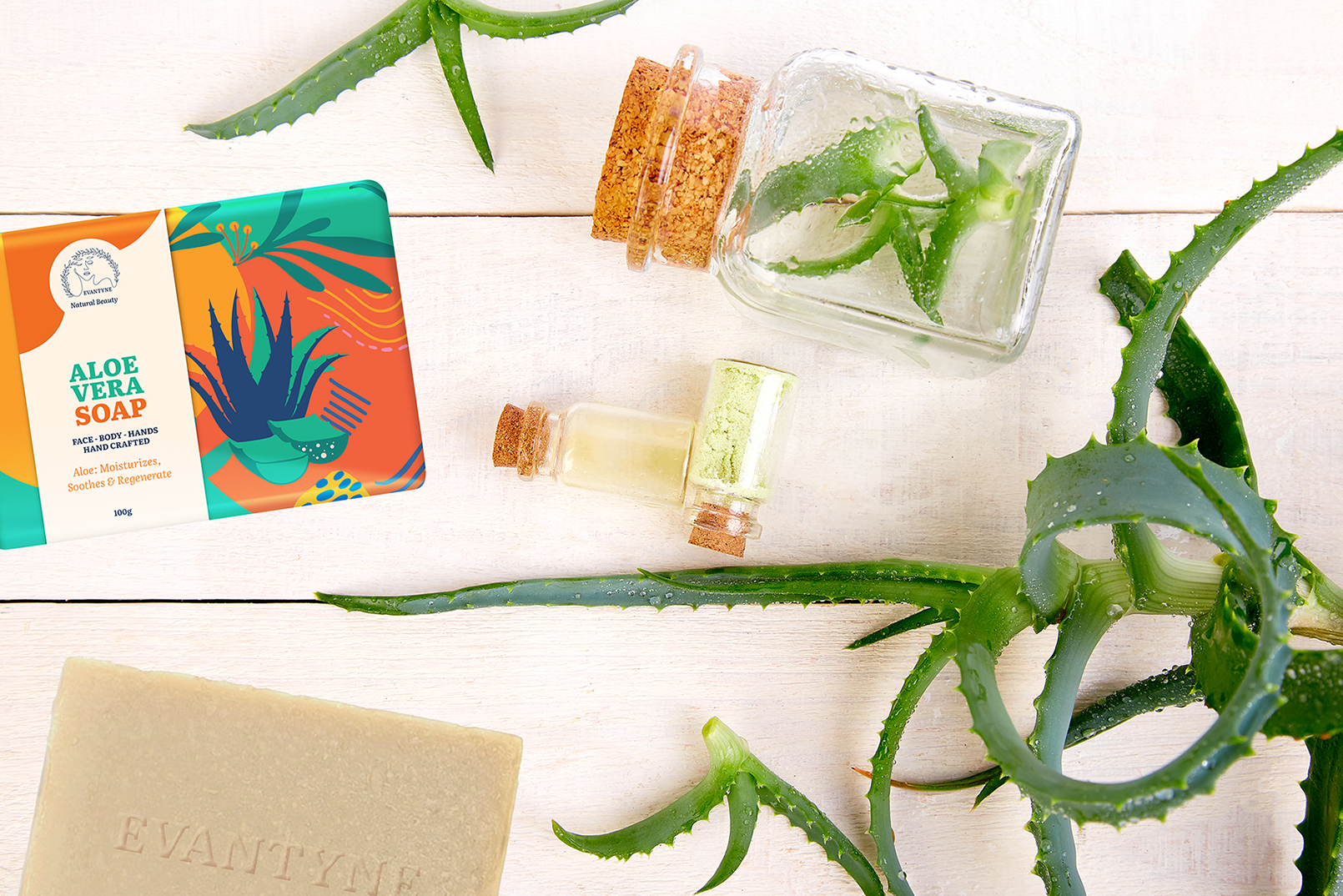Why an Aloe vera gel soap?
It all started many years ago in Brussels, with a small Aloe vera plant in a pot. The pot became too small for the single plant, which rapidly grew and reproduced, and over time, dozens of these potted plants invaded the windowsills. Overproduction, primarily a problem of available space, imposed “creative” measures to avoid waste, and thus the very first Aloe vera gel soaps appeared in 2016. After much intense research on the subject, the original formula was much improved, and today produces a safe and high-quality soap perfectly in line with recommended standards.
Once the project became reality, it created a need for a source of Aloe vera with roots in fertile soil. We found this miraculous plant on the sunny island of Crete, growing in a soil enriched with Aloe vera compost.
Aloe vera gel has an excellent reputation going back thousands of years, and based mainly on its use and excellent results in the therapeutic and aesthetic fields.
The oldest known testimonies to the fabulous virtues of this plant were written on the Sumerian tablets 4200 years ago. Much later in the plant’s historical journey, the Ebers Papyrus, a 16th century BC Egyptian medical treaty, mentioned its laxative properties. In the 3rd century BC, Alexander the Great was supposedly persuaded by Aristotle, his mentor, to conquer the island of Socotra, which had a reputation for hosting a multitude of plant species including Aloe vera, which proved to be of incredible efficacy in the treatment of wounds during the wars of that time.
Legend also has it that the queens of Egypt, including Nefertiti and Cleopatra, owed much of their renowned beauty to the use of this miraculous plant in their daily beauty rituals.
Avicenna, a famous physician and philosopher writing around 1000 AD, mentioned Aloe vera in his “Canon of Medecine”, which was a milestone in the history of medicine. In the Middle Ages, the reputation of aloe vera was already well-established, the plant being generally recommended for its medicinal and aesthetic properties and widely used in pharmacies of the time.
At the beginning of the twentieth century, Aloe vera began to be cultivated to meet the needs of the pharmaceutical industry.



